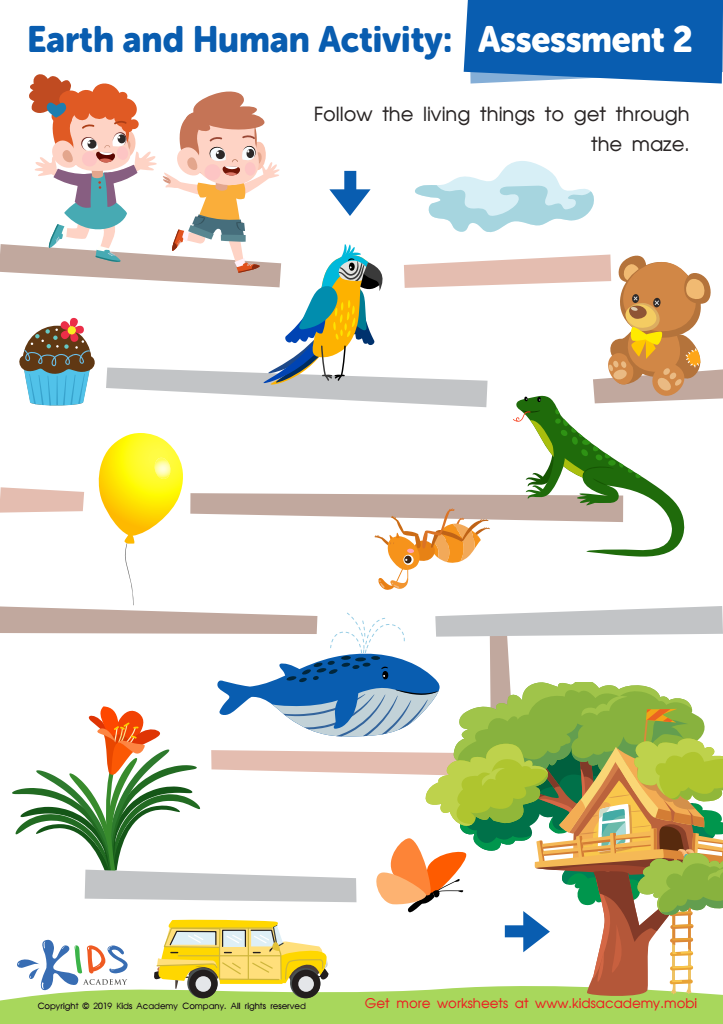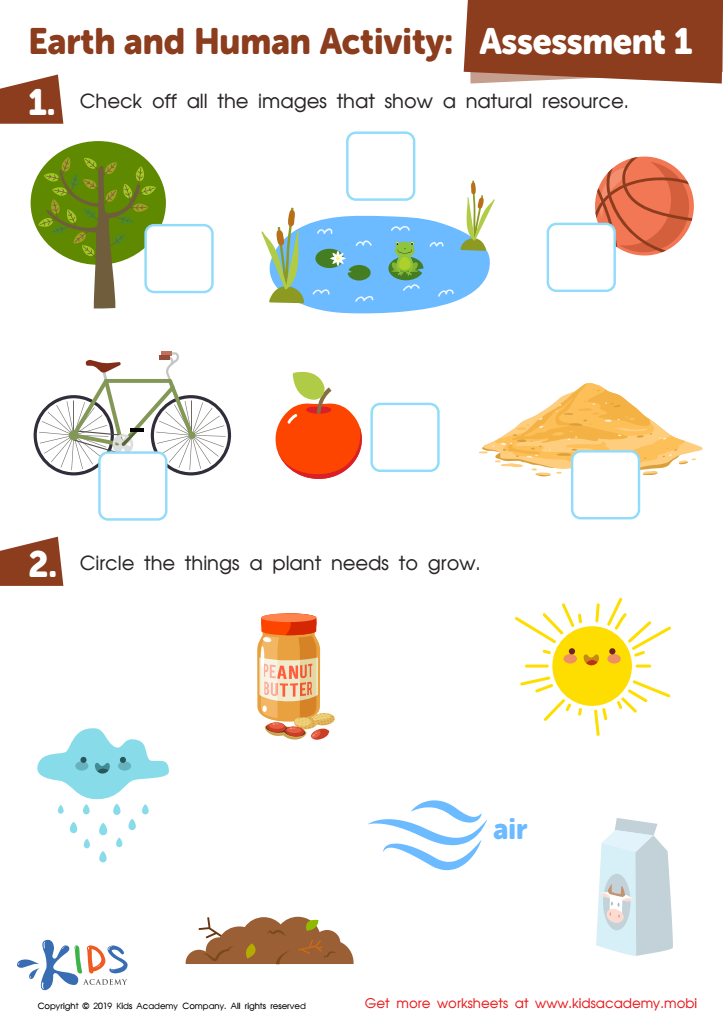Plants and Animals worksheets activities for 4-Year-Olds
2 filtered results
-
From - To
Explore the Wonders of Nature with Our Plants and Animals Worksheets Activities!
Dive into the fascinating world of flora and fauna with our engaging collection of Plants and Animals Worksheets Activities. Tailored for curious minds, these activities are designed to spark interest and deepen understanding of the living world around us. From the life cycle of a butterfly to the parts of a plant, our worksheets cover a wide range of topics, making learning both fun and informative. Ideal for students eager to explore biology's basics, these activities blend education with entertainment, ensuring a memorable learning experience. Embark on a journey of discovery today with our enriching worksheets activities!


Earth and Human Activity: Assessment 2 Worksheet


Earth and Human Activity: Assessment 1 Worksheet
Plants and Animals worksheets activities are an incredibly useful educational tool, serving as a cornerstone for teaching and learning about the natural world. These activities are not just about filling out sheets; they are about igniting curiosity, fostering a deeper understanding, and instilling a sense of responsibility towards our environment.
First and foremost, Plants and Animals worksheets activities offer a structured way for students to engage with the complexities of ecosystems and the interdependence of living things. By working through these activities, students can visually and intellectually grasp how plants and animals interact within their habitats, how they contribute to the ecosystem's health, and the roles they play in sustaining life on Earth.
Moreover, these worksheets activities are designed to cater to diverse learning styles. Whether a student learns best through visualization, reading and writing, or hands-on activities, there are worksheets tailored to engage them effectively. This inclusivity enhances the learning experience, making the concepts of botany and zoology accessible and interesting to everyone.
Another significant advantage is the ability to encourage critical thinking and problem-solving skills. Through Plants and Animals worksheets activities, students are often presented with scenarios or problems that require them to apply what they've learned. This could range from designing a sustainable habitat to understanding the effects of climate change on specific ecosystems. Such exercises push students to think critically about the world around them and consider the consequences of human actions on the environment.
Lastly, these worksheets pave the way for future environmental stewardship. By learning about the importance of plants and animals in our lives, students develop a sense of responsibility towards preserving them. This early education is crucial in raising environmentally conscious individuals who are willing to advocate for and implement sustainable practices in their lives.
In summary, Plants and Animals worksheets activities are an invaluable resource in education. They not only make learning about the natural world engaging and accessible but also play a pivotal role in shaping the environmental guardians of tomorrow.
 Assign to the classroom
Assign to the classroom












